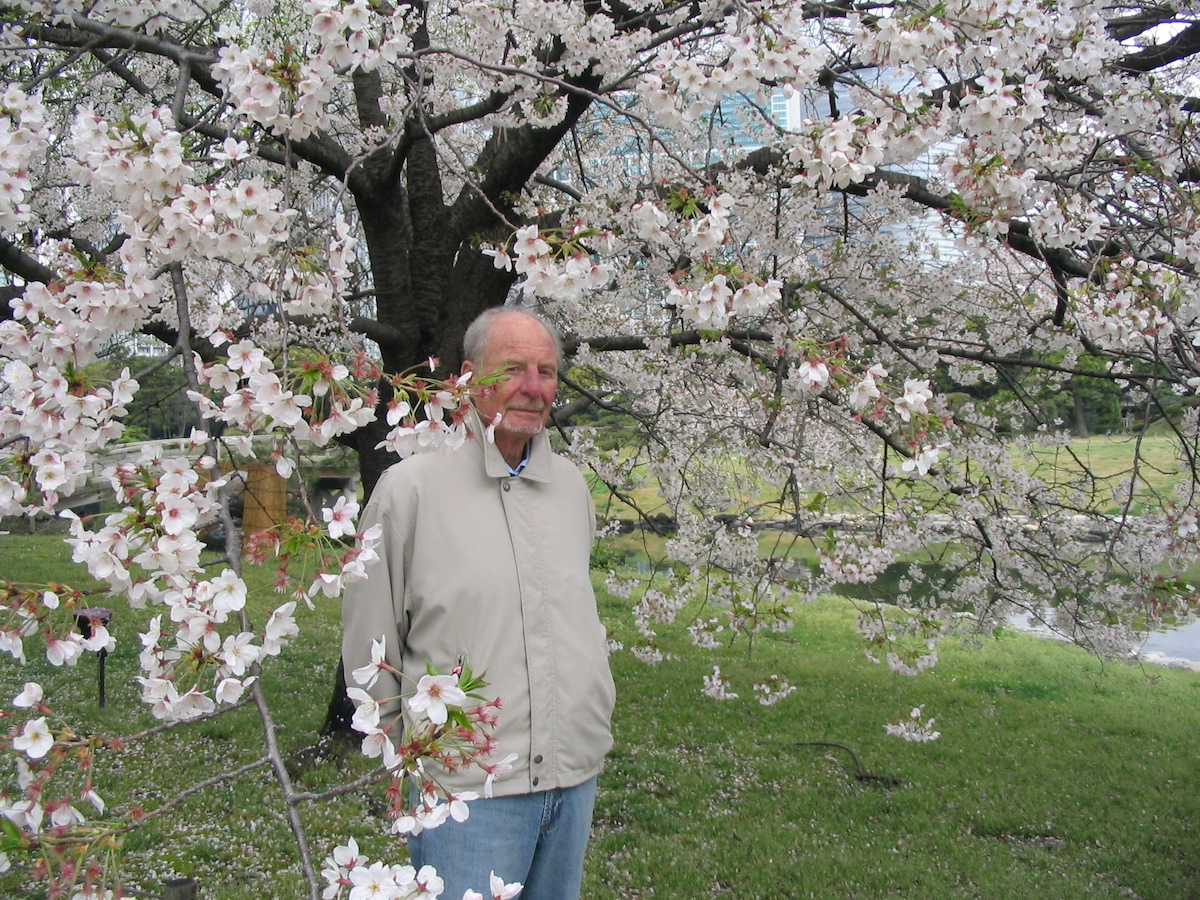
Almost exactly 58 years ago, Edward “Ted” McToldridge was introduced to the Child Estate Foundation’s Board of Directors as the new Zoo Director. Just months prior, he held the title of Child’s Estate Superintendent. This new title was more than just a change in wording as the ensuing 33 years would reveal. Until his retirement in December 1997, McToldridge led the fledgling zoo through its earliest struggles as it rose to become one of the community’s most beloved institutions.
Ted McToldridge was born in London, England, in 1930. In his twenties, McToldridge headed to Toronto, and then even farther south, landing in California. As an amateur race car driver, he traveled to wherever the competition would take him. It was the late ’50s when he found himself competing in a race at the Santa Barbara Airport. While enjoying breakfast on Cabrillo Boulevard, admiring the iconic line of palm trees, McToldridge decided that this was home.
He was running his own industrial design business when the Jaycees accepted the challenge to build a park at the former Child Estate. Lillian Child had left her estate to the Santa Barbara Foundation with the intent that it would be turned into a park for children. Not in the business of building and managing parks, the Foundation turned the property over to the City of Santa Barbara. The Department of Parks & Recreation had few resources to commit to creating this new park and turned to volunteers, championed by the Jaycees, to build the park.
McToldridge started volunteering with the Jaycees, helping to clear the site, construct concrete pens to hold animals, and make a parking lot on the zoo hilltop. His hard work and dedication made McToldridge a standout volunteer. He turned his passion into a full-time job with the Child Estate Foundation and never looked back.
McToldridge dedicated his life to building the Santa Barbara Zoo. He focused his creative abilities and imagination on building from the ground up despite limited financial resources. When he retired in 1997, McToldridge told the Santa Barbara Independent, “When we started, someone gave us a tool shed and someone gave us a desk and a chair, and it evolved from there.”
Sign up for Indy Today to receive fresh news from Independent.com, in your inbox, every morning.
In creating exhibits, McToldridge cobbled together used plywood, surplus pipes and valves, and discarded window frames and scaffolding, incorporating these pieces in a way to rival any of today’s recycling efforts. Day’s end would find contractors dropping off unused building materials, plumbers bringing pipes and fittings, and electricians leaving conduit and wiring. McToldridge would dispatch workers to retrieve framing wood from a completed concrete pour or gather up the remnants of a renovation project. It was his resourcefulness that turned those materials into the exhibits he designed. Add a little concrete and some lush landscaping, and visitors were quickly immersed in an aesthetically pleasing experience with animals. What the start-up foundation lacked in a bank account, McToldridge made up for in vision and ingenuity.
Following his retirement, McToldridge would reminisce with the staff about his early adventures, recalling the collection of hedgehogs he cared for while growing up in England, which had sparked his unflagging interest in animals. Upon the death of Mary Lou, the zoo’s American alligator, in February 2021, he shared memories of the zoo’s oldest and longest-term resident: “A little boy showed up at the zoo one day in 1964, holding out a shoebox with two little alligators inside. He said, ‘Mister, will you take care of my alligators? My mommy won’t let me keep them.’ So we took them into our care.”
Eight years later, on July 3, 1972, two young newcomers took up residence. Following a long journey from India, Little Mac and Sujatha, one-and-a-half-year-old female Asian elephants, called Santa Barbara “home” for most of the next five decades. McToldridge created temporary housing for the two youngsters while he worked feverishly to design and build the exhibit that opened in 1974. He continued to modify the exhibit, twice increasing the height of the building to stay ahead of Little Mac and Sujatha’s ability to reach features in the ceiling.
In addition to his eye for aesthetics and his thrifty approach to building, McToldridge was also a leader in promoting increased professionalism in the zoo and aquarium community. The Santa Barbara Zoo was first accredited by the American Association of Zoological Parks & Aquariums in 1982, years before it was a requirement for membership. The zoo has remained accredited ever since, meeting increased standards of the association under its current name, the Association of Zoos & Aquariums. McToldridge also coached and mentored many young professionals, some of whom went on to lead their own institutions and create new zoos and aquariums.
At the end of the day, and after serving as zoo director for more than three decades, McToldridge credited the spirit of volunteerism at the zoo we enjoy today. “Volunteer labor made the zoo a project built by the love of this community,” he said in an interview upon his retirement. McToldridge’s wish for the zoo endures: that its most profound contribution to conservation comes from teaching young people about the wonders of nature and instilling a sense of awe with a dedication to action.
Support the Santa Barbara Independent through a long-term or a single contribution.
